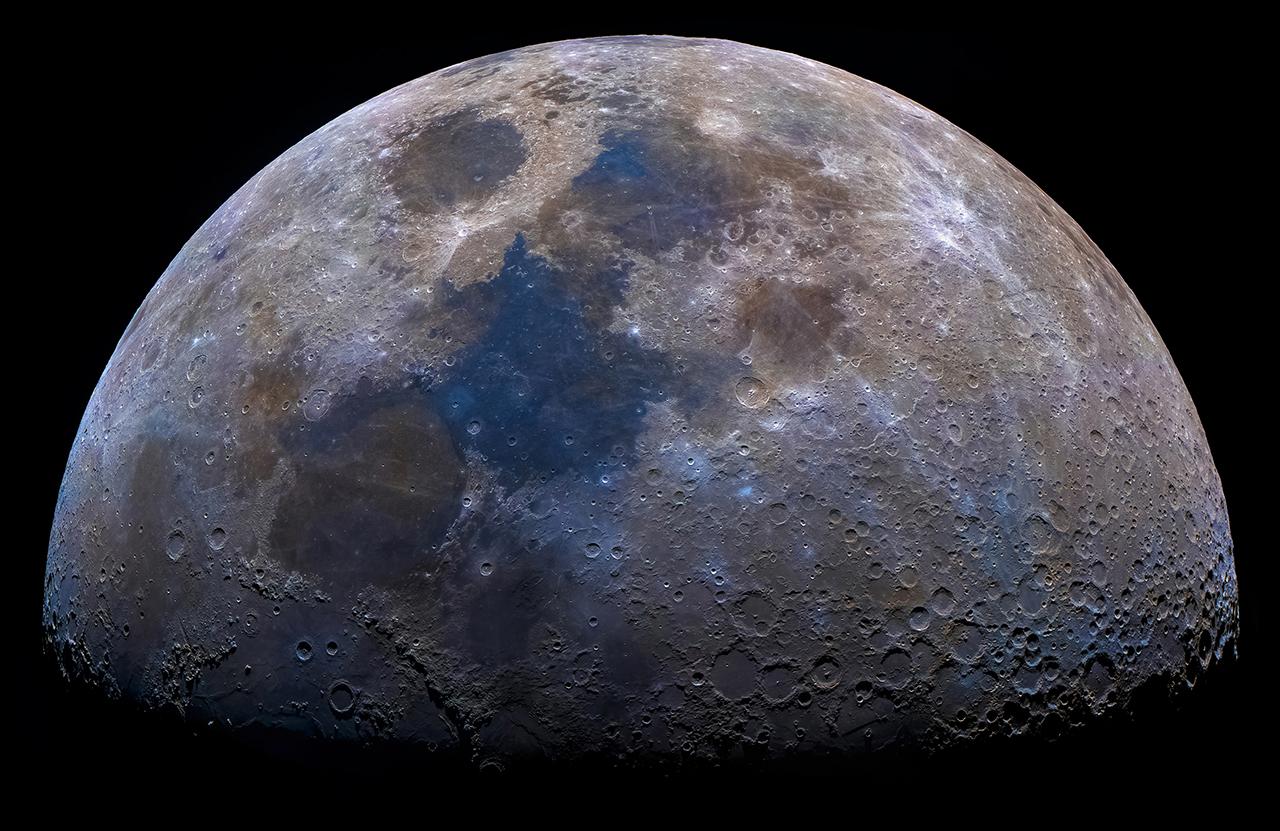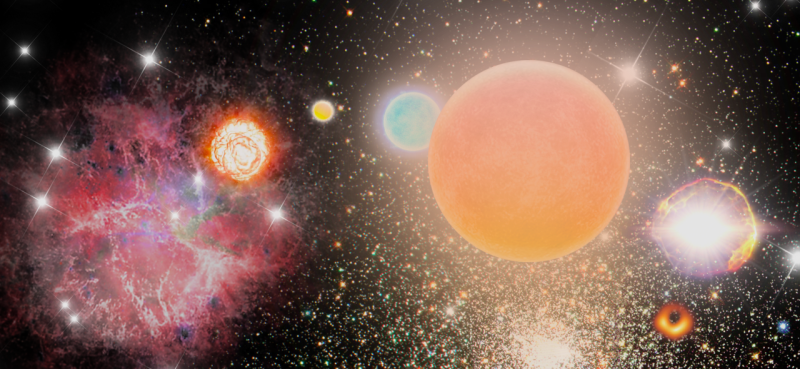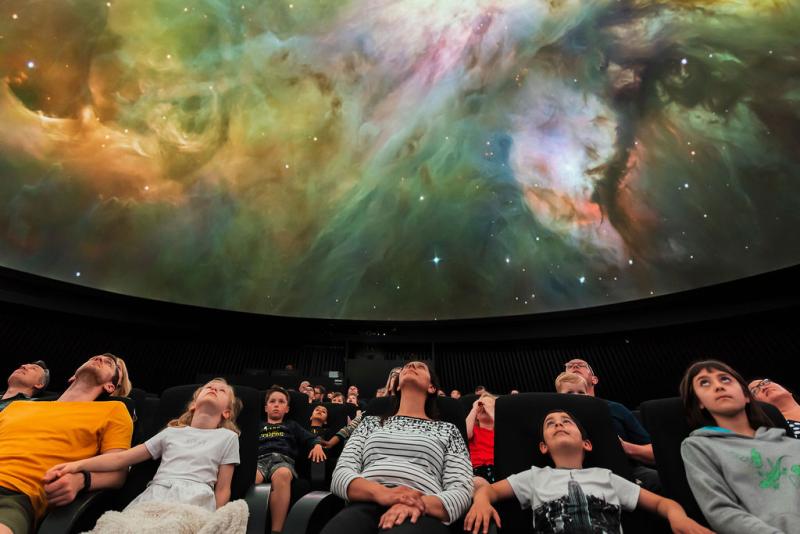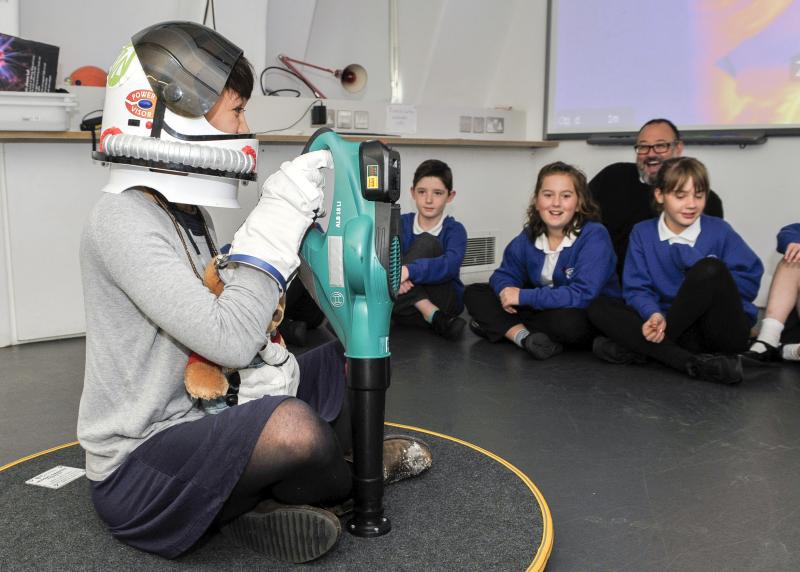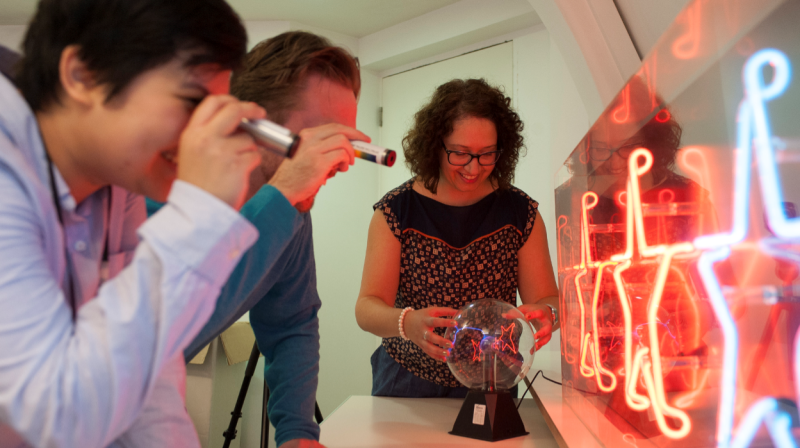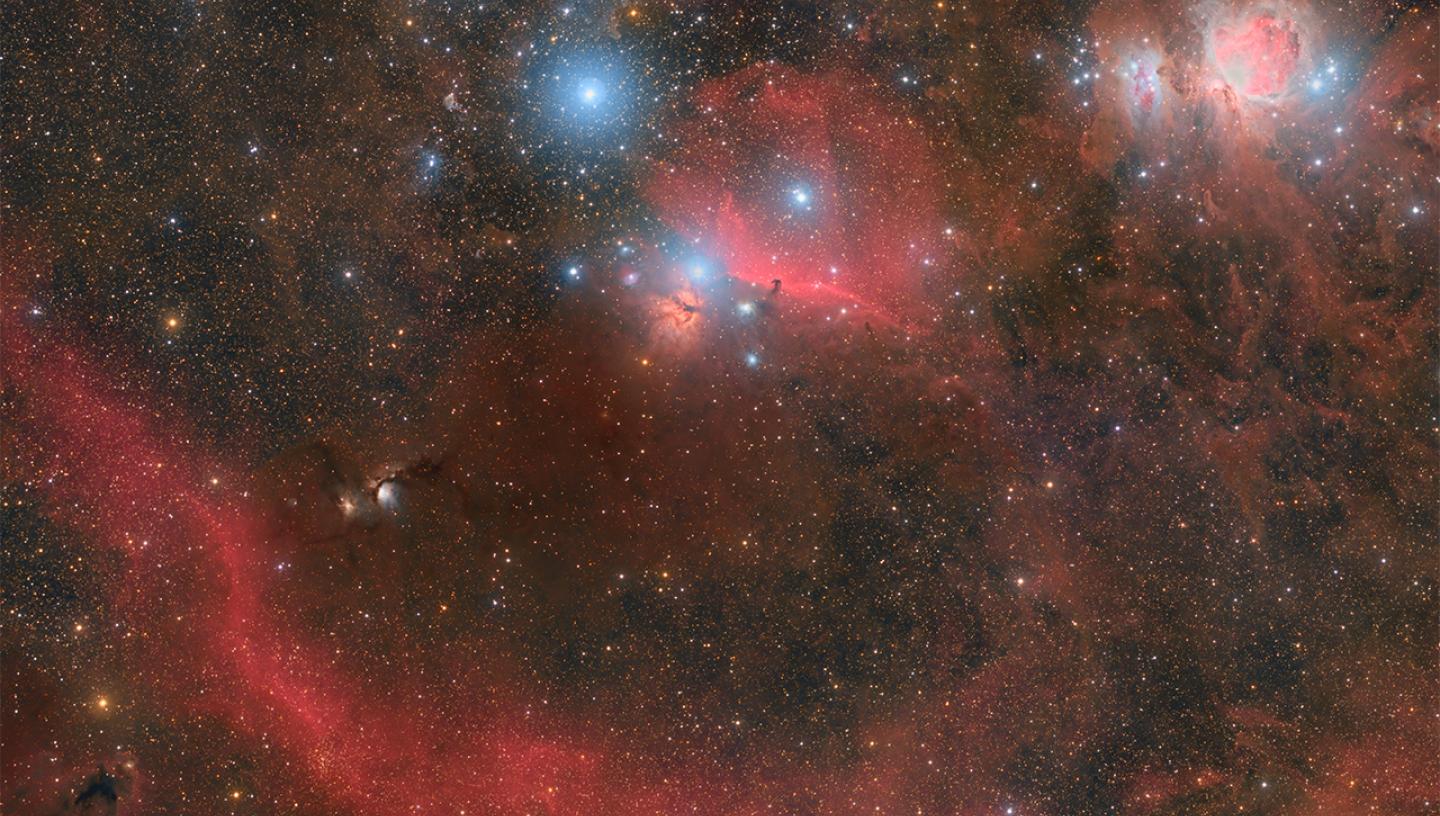
26 Oct 2022
Discover what to see in the night sky in November 2022, including a parade of planets and the peak of the Leonids meteor shower.
by Affelia Wibisono, Astronomy Education Officer
Top 3 things to see in the night sky in November
- Throughout the month – Catch up with an old friend - Orion the Hunter
- Throughout the month – Count the stars in the Pleiades
- 17/18 November – It's the peak of the Leonids meteor shower!
(Details given are for London and may vary for other parts of the UK)
Check out December's night sky highlights
Look Up! Podcast
Subscribe and listen to the Royal Observatory Greenwich's podcast Look Up! As well as taking you through what to see in the night sky each month, Royal Observatory Greenwich astronomers pick a topic to talk about.
For November, we talk about a new idea as to how Uranus got such an extreme tilt and a very sad update about the Arecibo Observatory. You can listen below and vote for your story of the month on our Twitter poll (@ROGAstronomers) which will go live during the first week of the month.
Our podcast is available on iTunes and SoundCloud.
Throughout the month: An old friend returns – Orion the Hunter
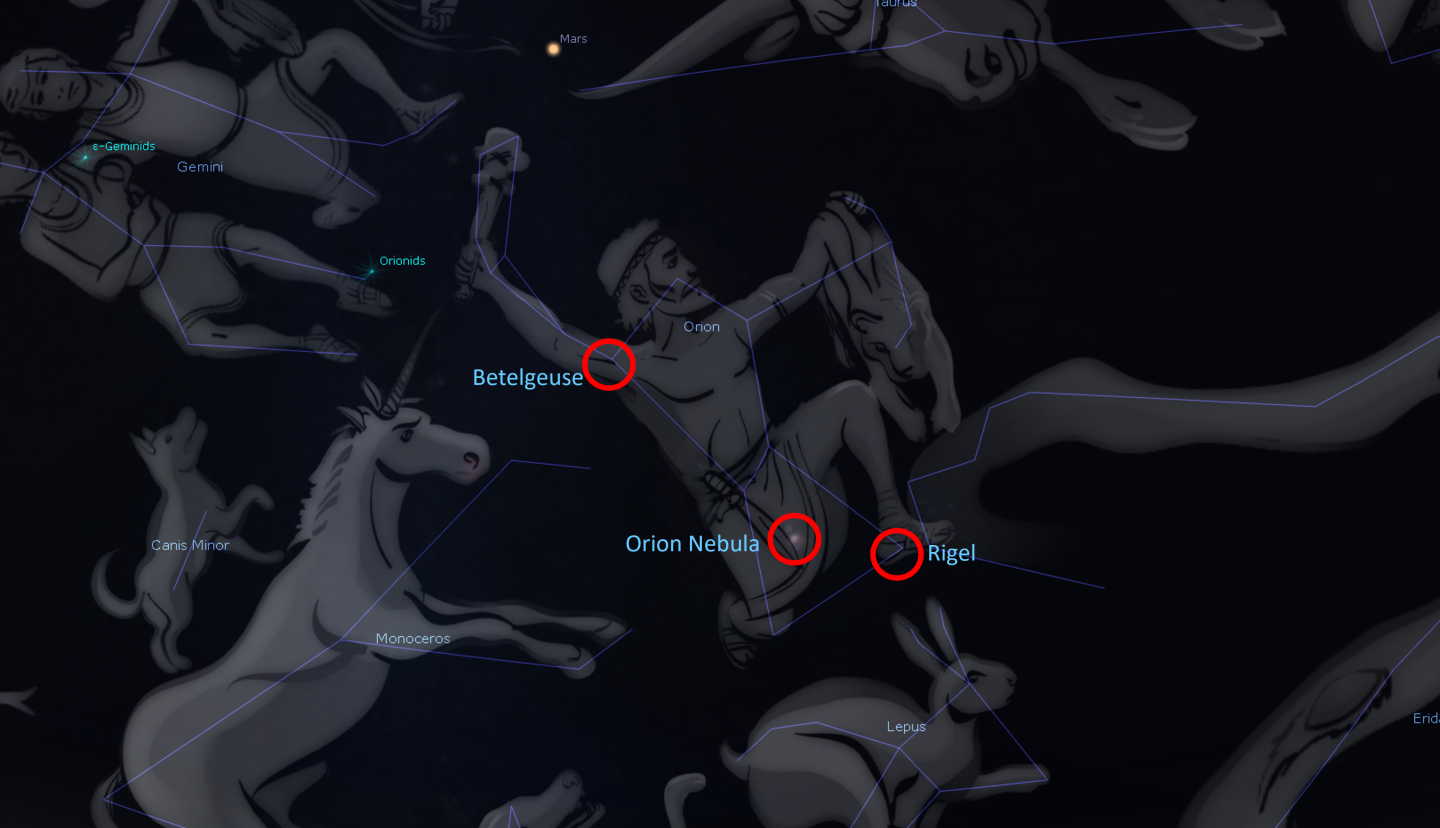
As we slowly make our way towards the winter months, one of the most well-known and easily recognisable constellations Orion the Hunter makes a welcome return to the night sky. Its familiar shape plays host to a number of fascinating sights for observers.
Firstly, the Orion Nebula, an enormous cloud of interstellar gas and dust that is one of the most active star forming regions in the relatively local region of the Galaxy. It can be found just below Orion’s belt in his sword and is visible through binoculars or a small telescope. If you are a keen astrophotographer, then this nebula is an excellent target to hone your skills on.
The constellation’s brightest stars, Betelgeuse and Rigel, are clear examples of how stars can have different colours depending on their temperatures. Even to the unaided eye, Betelgeuse is a deep orange-red colour, while Rigel is a bright blue-white. Each are supergiant stars late in their evolution, each a candidate for a future supernova. If Betelgeuse did explode, the bright burst of light would be visible even during the day and would last for many weeks or months.
Throughout the month: A cluster of cosmic jewels - the Pleiades
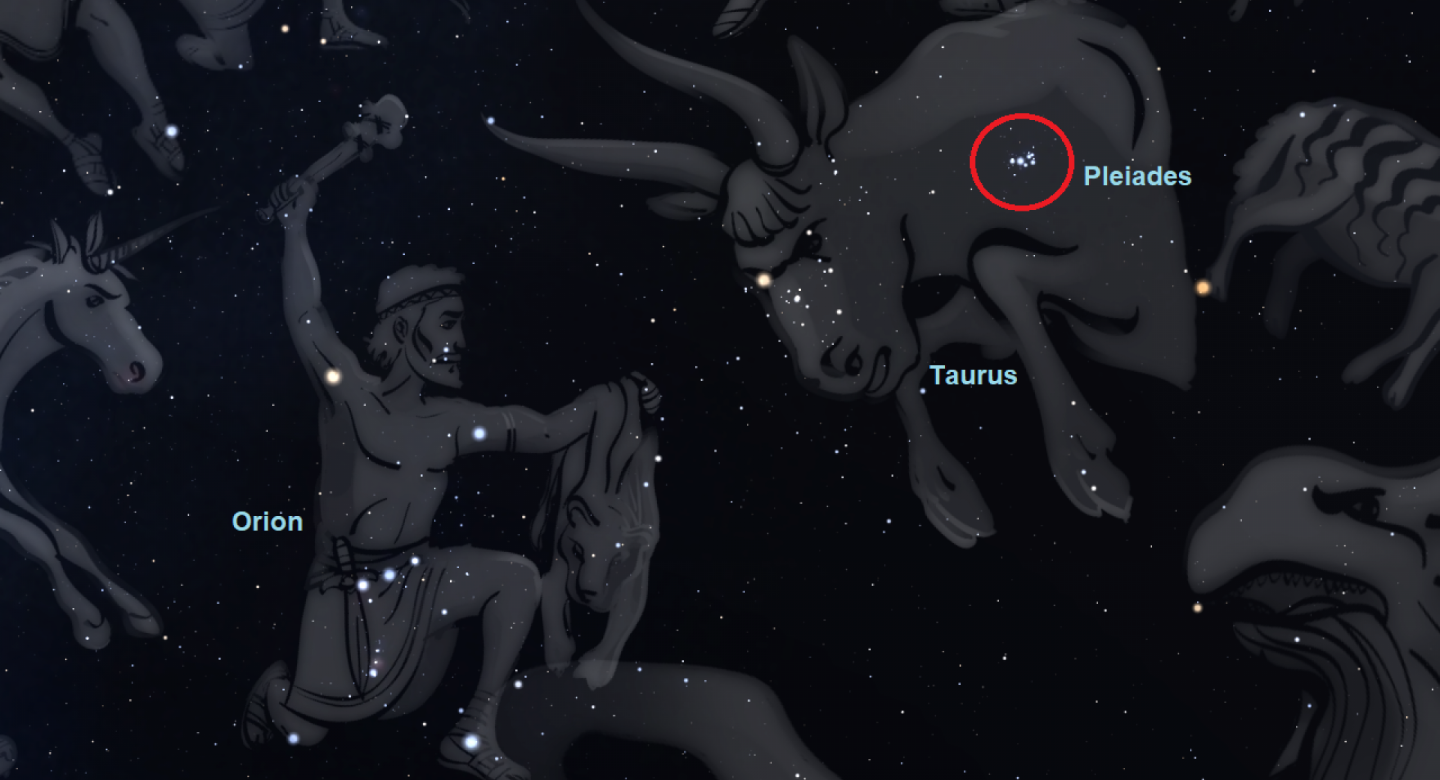
If you follow Orion the Hunter’s gaze across the night sky, you’ll come across a cluster of bright blue stars, the Pleiades star cluster. The Pleiades are sometimes called the ‘seven sisters’ as you should be able to see seven bright stars in the cluster with the naked eye, but this does depend on your eyesight as well as the observing conditions. Grab a pair of binoculars or a telescope and you’ll see that there are actually hundreds of young stars inside this open star cluster. The stars of the Pleiades cluster are cosmic babies, only around 100 million years old.
This cluster also contains a reflection nebula, a spectacular blue-coloured nebulosity that stands out in photographs taken of the nebula. The cloud of gas and dust producing the reflection nebula just happens to be passing through the stellar cluster. Just like light bounces off of a wall, starlight from the cluster is reflecting off the gas and dust producing the stunning reflection nebula.
9 November and throughout the month: A parade of planets
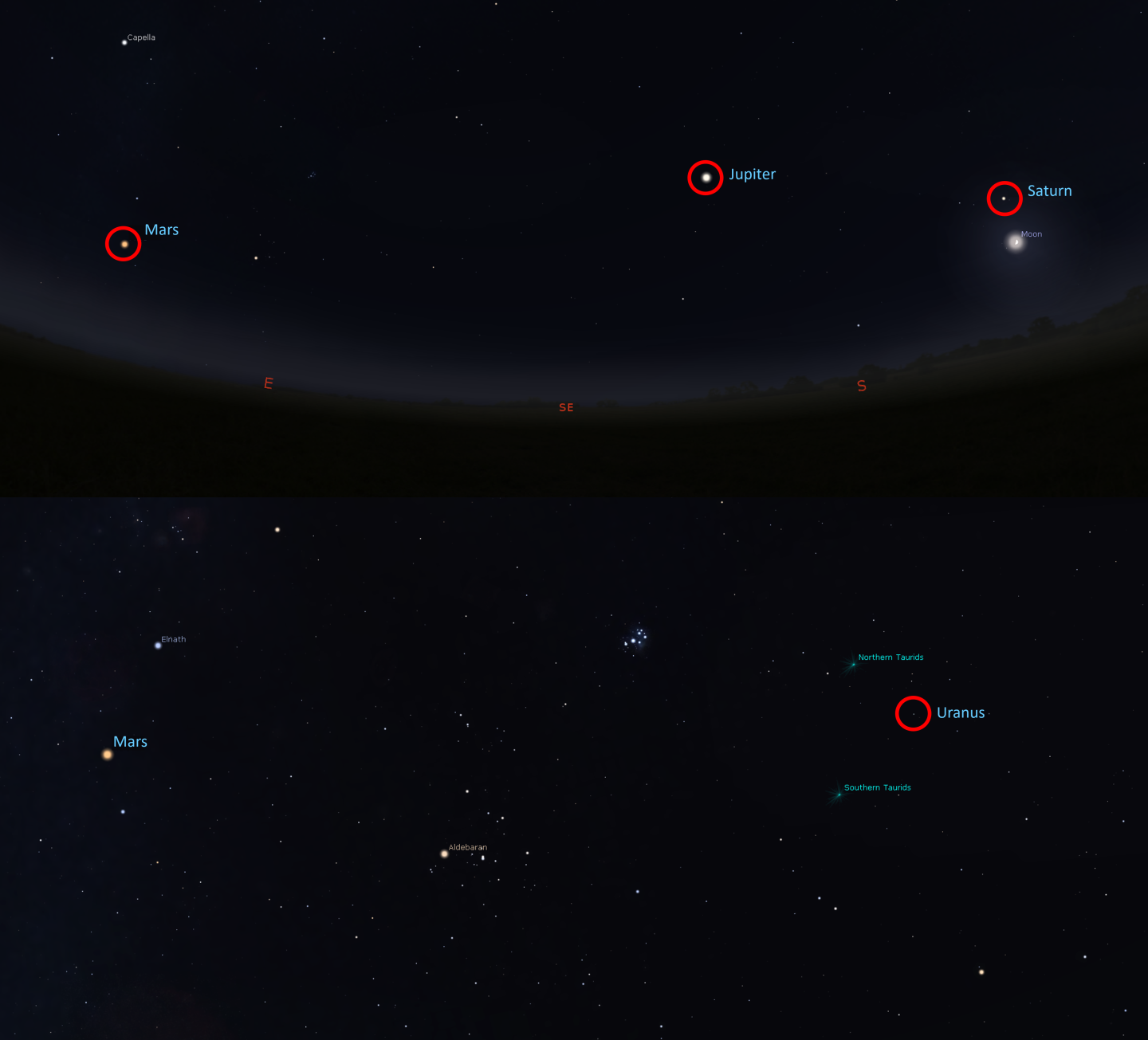
The distant ice giant Uranus reaches opposition on 9 November and will have a magnitude of 5.6, making it barely visible to the naked eye. If you are keen to test your eyesight out, then it’s best to wait a couple of days so that the faint light from Uranus doesn’t have to compete against bright moonlight.
Jupiter continues to put on a dazzling display this month and is well worth a view through a pair of binoculars or a telescope.
The crimson colour of Mars makes it easy to spot against the dark night sky and is another target worth looking at this month. Mars is slowly making its way towards opposition, which it reaches in December, so its brightness will steadily increase during the month.
Saturn is still up in the evening sky, but if you struggle to spot it, you can use the Moon to help you. Look towards the first quarter Moon on the first of the month, and you’ll see Saturn to its top left.
17/18 November: The peak of the Leonids meteor shower
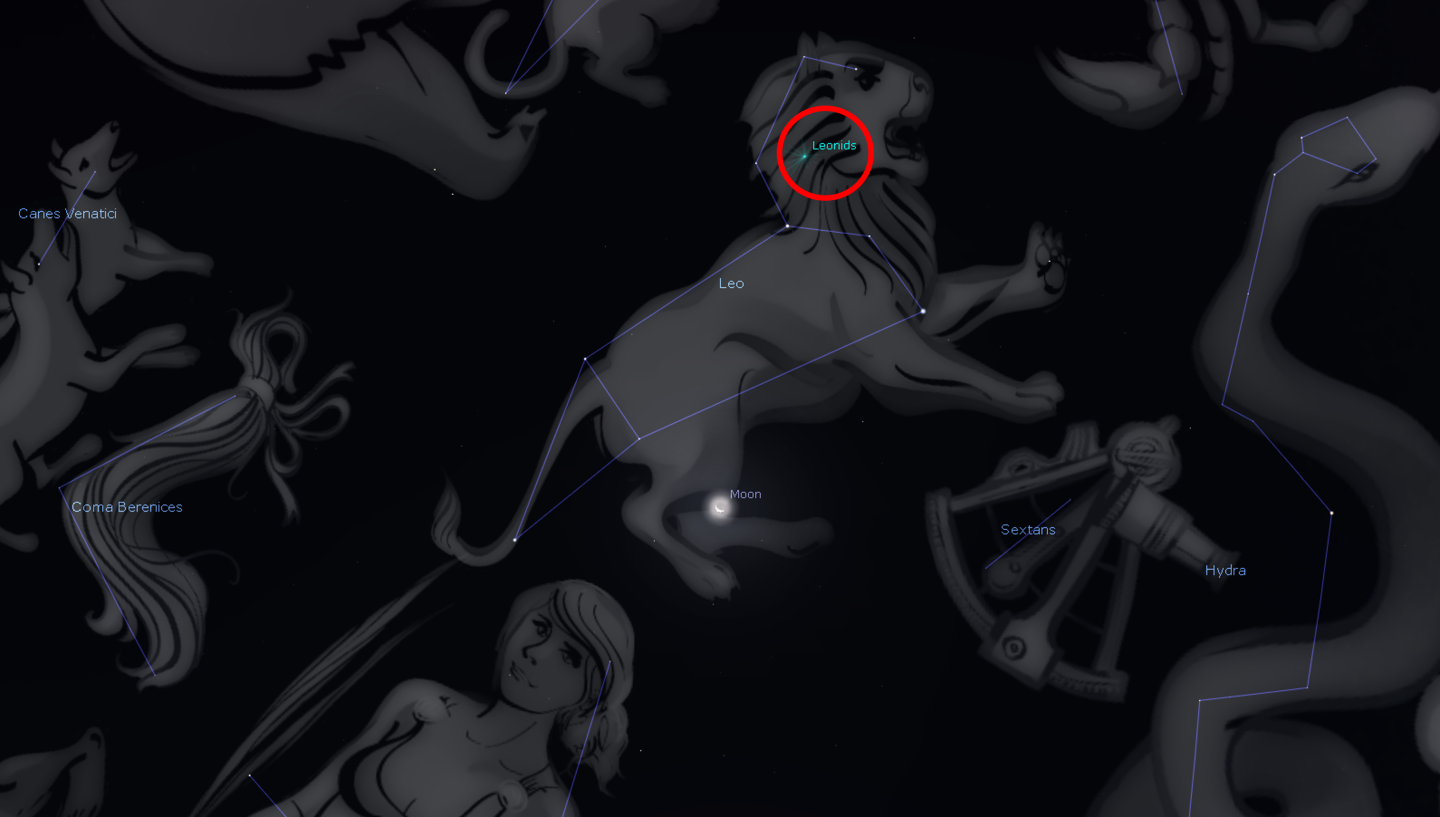
On 17 – 18 November, between midnight and dawn, the peak of the Leonids meteor shower will occur. These meteors can appear in any part of the sky but if you trace them back, they appear to come from the constellation of Leo.
The space rubble responsible for producing this meteor shower comes from Comet Tempel-Tuttle. While not the biggest meteor shower of the year, the Leonids is probably best known for its semi-regular meteor storms, when this moderate shower becomes vastly boosted. Unfortunately, the densest clouds of debris that can produce exceptional rates won’t be encountered again until 2099, while more moderate storms may be a decade or so away.
You can expect to see around 15 meteors per hour, and this year the meteors won’t have to compete against bright moonlight as the Moon will be in its last quarter phase. Hunting for meteors, like the rest of astronomy, is a waiting game, so it's best to bring a comfy chair to sit on and to wrap up warm as you could be outside for a while!
Southern Hemisphere – throughout the month: Puppis the Stern
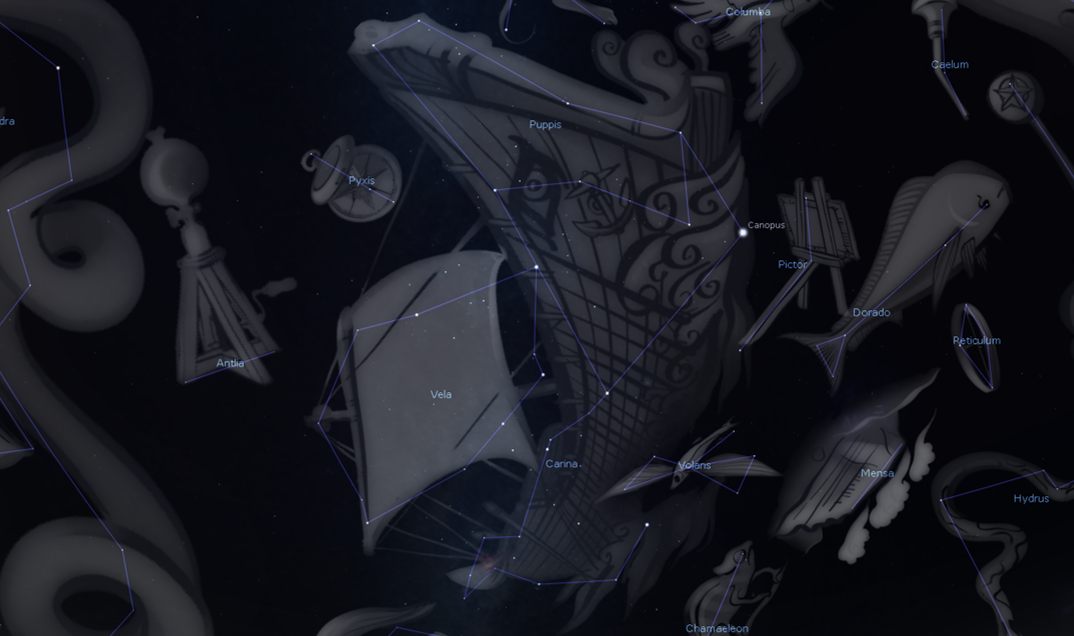
For those living in the Southern Hemisphere, follow the Milky Way across the sky to find the constellation of Puppis, the Stern. This constellation was once part of a much larger constellation called Argo Navis which represented the ship that carried Jason and the Argonauts on their mythological journeys.
In the 18th century, the constellation was broken into three smaller constellations that make up the parts of the ship, with Puppis representing the Stern, Carina the Keel and Vela the Sail. Interestingly, because the stars were not redesignated after the splitting of the large Argo Navis constellation, there is no Alpha Puppis star.
Instead, the brightest star in Puppis is Zeta Puppis. The constellation contains a number of star clusters for you to choose from.
NGC 2477, also known as Caldwell 71, is an open star cluster located around 4,000 light years from the Earth. Easy to spot with a pair of binoculars, this cluster is so rich in stars that it is often mistaken for a globular cluster. Another open cluster to look at is M93, a small but bright stellar cluster whose component stars appear to have come together to form a squashed letter ‘Z’ in space.
The Moon’s phases this month
- 1 November: first quarter Moon (06:37 am)
- 8 November: full Moon (11:02 am)
- 16 November: third quarter Moon (1:27 pm)
- 23 November: new Moon (10:57 pm)
- 30 November: first quarter Moon (2:36 pm)
If you're a fan of the Moon, then see the winners and shortlisted images in the 'Our Moon' category of the 2022 Astronomy Photographer of the Year competition.
Stargazing Tips
- When looking at faint objects such as stars, nebulae, the Milky Way and other galaxies it is important to allow your eyes to adapt to the dark so that you can achieve better night vision.
- Allow 15 minutes for your eyes to become sensitive in the dark and remember not to look at your mobile phone or any other bright device when stargazing.
- If you're using a star app on your phone, switch on the red night vision mode.
See our range of observing equipment
Share your pictures
This month's banner image is 'Orion’s Spectrum' by Saahil Sinha. It was one of the shortlisted images in the 2022 Astronomy Photographer of the Year competition.
Do you have any images of the night sky? If so, why not share your photos via our Royal Observatory Astrophotography Facebook group.
You can also connect with us via Twitter: @ROGAstronomers
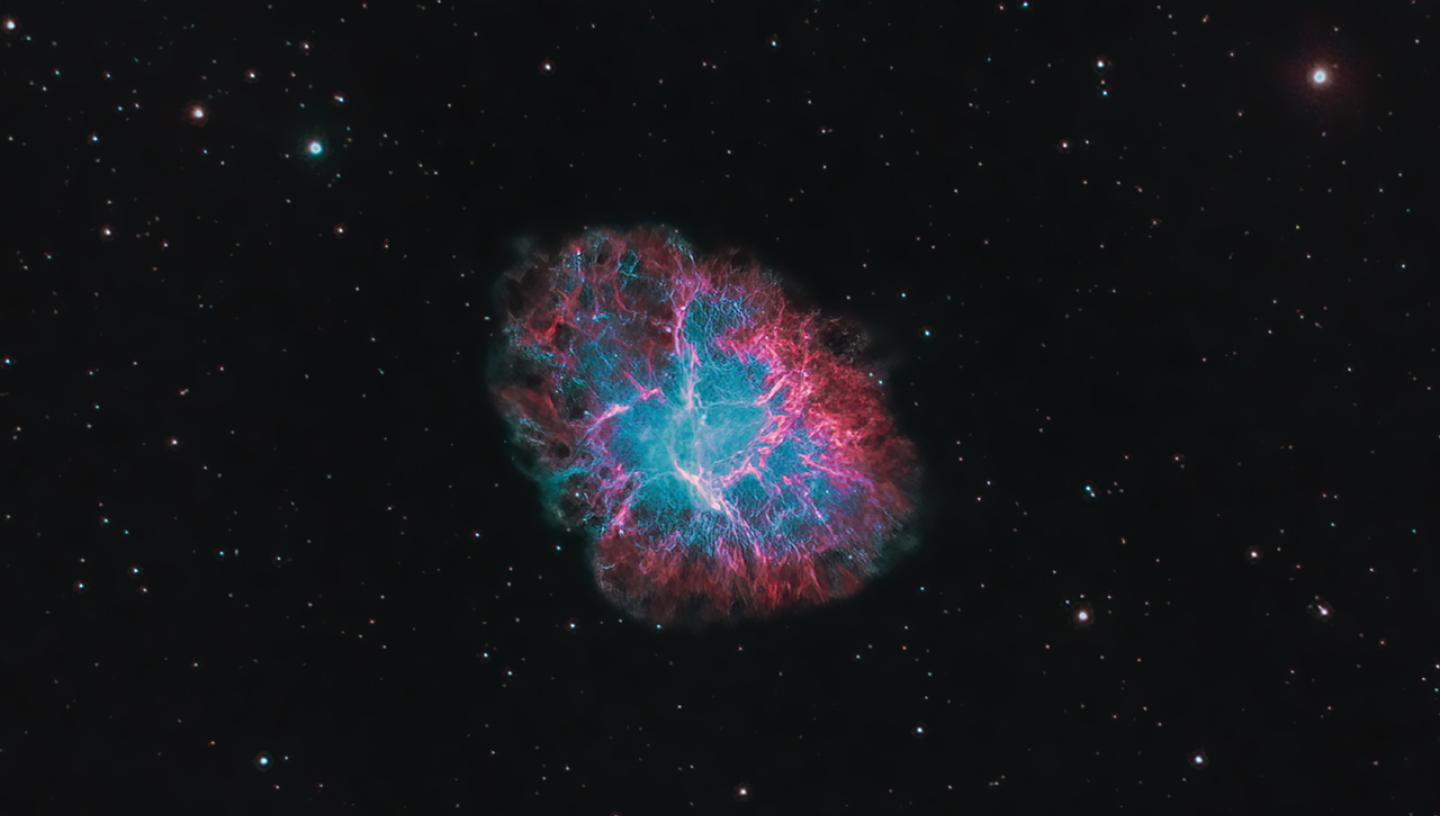
December's night sky highlights
Planetarium Shows
Join us for live planetarium shows
Royal Observatory Greenwich YouTube Channel
Subscribe to our YouTube channel and join us on a journey through time and space as we explore our Universe. You'll find a selection of videos on our channel, including our Observatory Online video series in which our astronomers explore different topics in astronomy and space exploration.
Resources for teachers and students
The Royal Observatory Greenwich's learning team has also created:
- Free animated videos that answer the biggest questions in astronomy and free resources to go alongside them.
- A whole host of podcasts featuring interviews with real space scientists, astronauts and active researchers working in UK universities.
- A 'learning at home' hub which contains a suite of resources for you to use at home.
